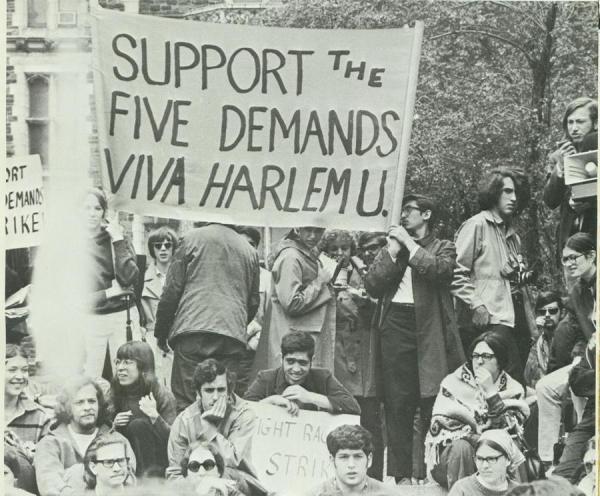Closing the Open Door: Open Admissions at The City University of New York
Across America the seeds of an egalitarian admissions policy had been planted in the mid-1800s with the establishment of the Morrill land-grant colleges in 1862 especially in the Midwest. The goal of these public state colleges and universities was to provide educational opportunities, both technical and classical, to a broader segment of the population than heretofore had the opportunity.
Since its inception, City College emphasized the idea of learning for all. President Horace Webster’s 1849 speech at the College’s opening ceremonies emphasized this principle when he said that “the experiment is to be tried whether the high- est education can be given to the masses [males only, however]…”

So, one might ask, why did CUNY’s Open Admissions policy of 1970 create such a furor politically and in the press? Several factors played a role. The stormy political times of the 1960s and 1970s contributed to a focus on student militancy nationwide. The fact that Open Admissions—to all of CUNY including the senior colleges—followed fast on the heels of the Five Demands protest at CCNY, subsequently spreading to other CUNY campuses, convinced some observers that the plan had been hastily conceived and put into place in reaction. Additionally, New York City high schools were producing a number of graduates, many by then Black and Puerto Rican, who faced difficulties with a college curriculum due to poor preparation, but who wanted their fair chance at higher education. Adding to the confusion, there had been conflicting CUNY admissions plans forwarded in the 1960s, each with its supporters. With all the clamor and uproar, it was not an easy birth.
Adopted in late 1969, CUNY’s plan guaranteed that the top 50% of high-school graduates and those who had at least an 80 average could attend a senior college, although not necessarily their first choice. Candidates would list their choices of senior colleges in order of preference. Those students with higher grades would be more likely to get their first choice of senior colleges. SEEK and College Discovery students would continue to be admitted according to the two programs’ guidelines. In fact, the Board authorized a simultaneous expansion of the SEEK program.
Lastly, other applicants were guaranteed a community college slot. The plan also incorporated wide-ranging and costly remedial and support programs for those students needing them. Open Admissions had begun and its immediate impact was great: a fall 1970 CUNY freshman class in which Blacks and Puerto Ricans constituted 27% of the student body, slightly more than the 25% figure envisioned by Chancellor Bowker. In 1967, by contrast, only 13% of the student body was Black and Puerto Rican. Simply in terms of numbers in the university as a whole, enrollment increased approximately 75%. The impact on CUNY, particularly at the senior college level, was more than remarkable. It was transformational.
The CCNY student protest underscored for many observers, if not all, the need for deeper and more rapid changes. At a minimum, the protesters and their supporters called for a CUNY student population that would reflect the demographic makeup of the city’s public high schools. They wanted to see this in the senior colleges as well as in the community colleges. Community groups and a number of New York City politicians, including John Lindsay who was attempting to appeal to minorities in his quest for the mayoralty, supported the protesters’ goals. Other politicians objected. The Five Demands protest in the end, however, seemed to crystallize growing currents of support, both nationally and locally, for equality for all regarding access to higher education.
It is important to emphasize that white students also benefited from Open Admissions. Even though the percentage increase in CUNY enrollment was greater for minority students, white student admissions generally outnumbered minority admissions under the new program. When examining City College’s admissions for the first five years of the new policy, however, David Lavin noted that, “78 percent of the freshman entering in 1969 were whites; by 1975, only 30 percent were.”

Source: CUNY Digital History Archive.


